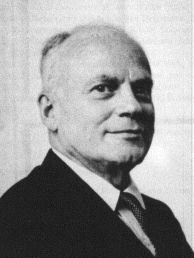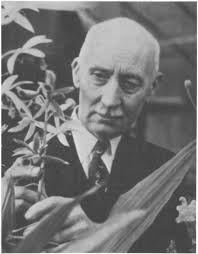Related Research Articles

Amos Alonzo Stagg was an American athlete and college coach in multiple sports, primarily American football. He served as the head football coach at the International YMCA Training School (1890–1891), the University of Chicago (1892–1932), and the College of the Pacific (1933–1946), compiling a career college football record of 314–199–35 (.605). His undefeated Chicago Maroons teams of 1905 and 1913 were recognized as national champions. He was also the head basketball coach for one season at Chicago (1920–1921), and the Maroons' head baseball coach for twenty seasons.

Jacob Viner was a Canadian economist and is considered with Frank Knight and Henry Simons to be one of the "inspiring" mentors of the early Chicago school of economics in the 1930s: he was one of the leading figures of the Chicago faculty. Paul Samuelson named Viner as one of the several "American saints in economics" born after 1860. He was an important figure in the field of political economy.

Fielding Harris Yost was an American college football player, coach and athletics administrator. He served as the head football coach at: Ohio Wesleyan University, the University of Nebraska, the University of Kansas, Stanford University, San Jose State University, and the University of Michigan, compiling a coaching career record of 198–35–12. During his 25 seasons as the head football coach at Ann Arbor, Yost's Michigan Wolverines won six national championships, captured ten Big Ten Conference titles, and amassed a record of 165–29–10.

Frank Orren Lowden was an American Republican Party politician who served as the 25th Governor of Illinois and as a United States Representative from Illinois. He was also a candidate for the Republican presidential nominations in 1920 and 1928.

George Bosworth Churchill was an American politician, a Representative from Massachusetts, and an academic and editor.

Frederick Mitchell Walker, nicknamed "Mysterious", was an American athlete and coach. He was a three-sport athlete for the University of Chicago from 1904 to 1906 and played Major League Baseball as a right-handed pitcher for the Cincinnati Reds, Cleveland Indians, Brooklyn Superbas, Pittsburgh Rebels and Brooklyn Tip-Tops.

Albin Walter Norblad Sr., was a prominent lawyer who lived in Astoria, Oregon, United States, and the 19th Governor of Oregon from 1929 to 1931. He was a Republican.
George Rossman was an American lawyer and judge. He was the 29th Chief Justice of the Oregon Supreme Court in the United States. The Illinois native served on Oregon’s highest court for the longest time of any judge in the court's history, from 1927 to 1965. Previously he had worked as a judge for the city of Portland, Oregon and for Multnomah County, Oregon.
Earl H. Pritchard was an American scholar of China and one of the founders of the Association for Asian Studies and served as its president.
Herbert Kraus was a German professor of public international law. He was the first director of the Institute of International Law at the University of Göttingen. Due to his criticism of Nazism he was forced to retire between 1937 and 1945.
Macha Louis Rosenthal was an American poet, critic, editor, and teacher. The W. B. Yeats Society of New York renamed their award for achievement in Yeats studies the M. L. Rosenthal Award after Rosenthal's death. His 1959 essay, Poetry as Confession, is credited with being the first application of the term 'confession' to the writing of poetry and therefore for the naming of the confessional poetry movement.

William Philip Edmunds was an American football player, coach of football and basketball, college athletics administrator, and medical doctor. He played college football at the University of Michigan from 1908 to 1910. He was the head football coach at West Virginia University (1912), Washington University in St. Louis (1913–1916), and the University of Vermont (1919), compiling a career college football coach record of 19–22–2. Edmunds was also the head basketball coach at Washington University for on season in 1913–14, tallying a mark of 7–6.

Burdette "Bob" Glenn was an American baseball player and pioneer in the field of highway engineering.

Carleton Bruns Joeckel, was an American librarian, advocate, scholar, decorated soldier and wrote the National Plan for Public Library Service (1948) that provided the foundation for nationwide public library services.
Sanford Myron Zeller was an American mycologist.

Hazel Marguerite Schmoll (1890–1990) was an American botanist, and the first to conduct a systematic study of plant life in southwestern Colorado. She was also the first woman to earn a doctorate in botany from the University of Chicago. She was inducted into the Colorado Women's Hall of Fame in 1985.
Harold Judd Noyes (1898–1968), often called "Dean Noyes", was an American orthodontist who graduated from Angle School of Orthodontia. He was the Chairman of the Orthodontic Department of the Northwestern University Dental School. He also served as the Dean of University of Oregon Dental School.
Effie Almira Southworth Spalding (1860–1947), was an American botanist and mycologist, and the first woman plant pathologist hired by the United States Department of Agriculture (USDA). Her most important discovery was the 1887 identification of the fungus Colletotrichum gossypii as the cause of cotton cankers, a disease which killed thousands of acres of cotton and was a major economic threat. She taught botany at several institutions, worked at the Desert Botanical Laboratory with her husband, and established the Botany Department Herbarium at the University of Southern California.
Jack Swift Berry was a forestry expert and lumberman and then two-term member of the California State Legislature from the Republican Party.

Hugo Leander Blomquist was a Swedish-born American botanist. His well rounded expertise encompassed fungi, bacteria, bryophytes, algae, grasses, and ferns. The standard author abbreviation H.L.Blomq. is used to indicate this person as the author when citing a botanical name.
References
- ↑ Murmeek, A. E. (1960). "Ezra Jacob Kraus: 1885–1960". Plant Physiology. 35 (4): 543–544. doi: 10.1104/pp.35.4.543 . JSTOR 4259623.
- ↑ Linda C. Sage (2012). Pigment of the Imagination: A History of Phytochrome Research. Elsevier. pp. 33–34. ISBN 978-0-323-13854-3.